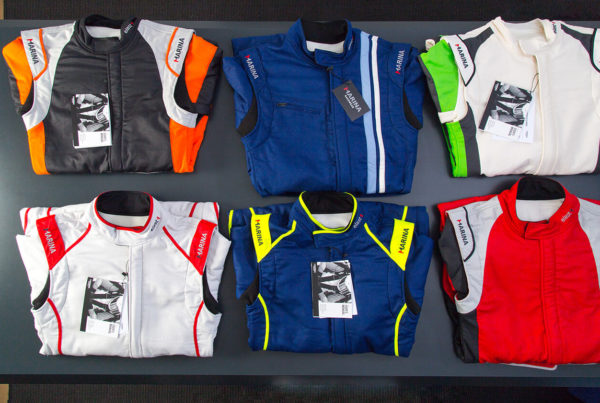Racing overalls, in addition of being attractive due to their aesthetics, are a key passive safety element to pilots, but at the same time, they have to be comfortable, and offer a high degree of comfort.
During history, there had been many changes incorporated in competition overalls. In the 60s, Federation Internationale de l’Automobile (FIA) introduced the first safety regulations that determined how pilot’s equipment should be: underwear, helmet, gloves, boots, overall, etc.
After that in 1976 the pilot Niki Lauda suffered an accident that almost cost his life, teams started to seriously take into account pilot’s safety, and raised considerably their inversion in safety matters, until the point that in 1979 some pilots competed with 5 layered overalls composed by materials used by NASA.
The high inversion in investment and development, with the apparition of new fabrics and new technologies gave as result ideas as surprising as the ones used in Ayrton Senna’s overall in 1987. His overall equipped, for the first time, shoulder pad-handles that allowed to take the pilot for the car’s interior in case of accident.
(Don’t miss our post 5 curiosities you didn’t know about your competition overall )
This safety evolution is the result of the great effort that brands develop to improve their products, and naturally, it impacts directly in its prize.
A meter of the fabric used to tailor an overall can cost as 20 times more thaan a meter of a “normal” fabric.
Why?
1 · To start with because we are talking about a permanent flame retardant fabric. This means that the thread used to create the fabric is flame retardant. Which gives as a result a fabric that never loses its flame retardant features besides the wear it is subjected.
2 · It is a high level technical fabric that passes quality tests where it is subjected to more than 10 different tests: tear, traction, abrasion, durability, etc.
3 · Plus, the fabric has to overcome regulation ISO 11612, this means that it has to protect during more than 11 seconds from possible second degree burns, and the flame auto-extinguishes when the fabric is removed from the fire source.
But the type of fabric is not the only factor that conditions the overall’s price because all the elements used in its confection have also to overcome regulation ISO 11612. We are talking about:
- Zippers that don’t melt or obstruct in case of fire.
- The thread used for seams
- The printed logos
- The final result is a piece with 2, 3 or even 4 layers of ultra light fabric, handmade tailored, that also has to be transpirable, comfortable and a real modern armor that can save your life in case of accident.
And after knowing all this, how much will you pay for a competition overall?



